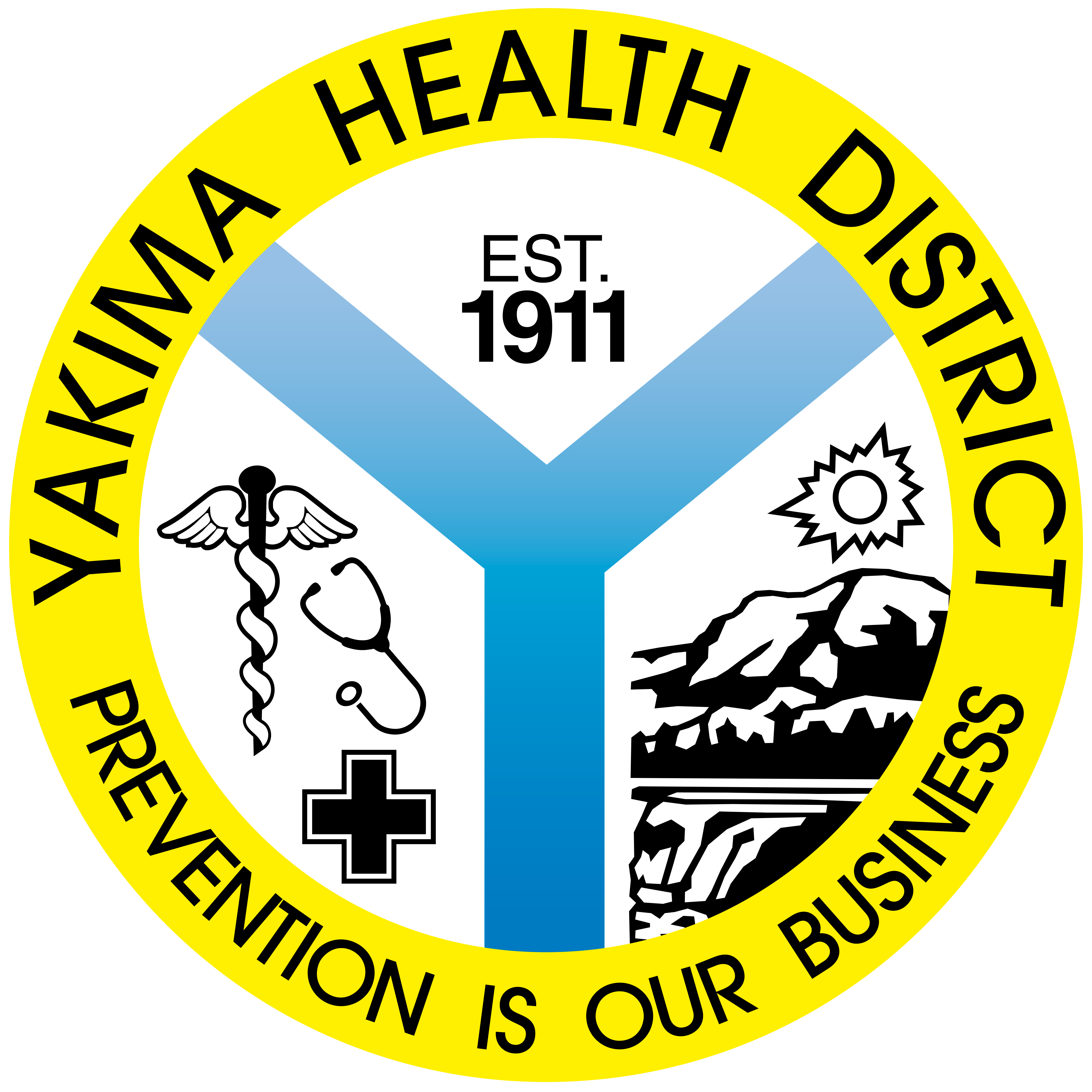
Requested Actions
- Be aware Yakima County is observing an increase in gastrointestinal (GI) illnesses, specifically Shigella, which is higher than what is typically observed in previous years.
- As of September 26th, 57 cases of Shigella have been reported in Yakima County this year, compared to 9 cases this time last year.
- Be aware of symptoms, diagnosis, and treatment of Shigella and other GI-related illnesses.
| How Shigella Spreads |
Shigella bacteria cause an infection called shigellosis. Shigella can spread easily from one person to another- and it only takes a small amount of Shigella to cause illness. Shigella spreads easily and individuals can get infected by swallowing Shigella. Some ways Shigella can get on individuals’ hands are:
- Getting Shigella on your hands and touching your mouth. Shigella can get on your hands by:
- Touching surfaces, such as toys, bathroom fixtures, changing tables, and diaper pails, contaminated with Shigella bacteria from someone with an infection.
- Changing the diaper of a child with a Shigella infection.
- Taking care of a person with an infection, including cleaning up after the person uses the toilet.
- Eating food prepared by someone with a Shigella infection.
- Swallowing water you swim or play in, such as lake water or improperly treated swimming pool water.
- Swallowing contaminated drinking water, such as water from a well that’s been contaminated with sewage or flood water.
- Exposure to poop during sexual contact with someone with a Shigella infection or who has recently recovered from a Shigella infection.
| Symptoms of Shigella |
Most people with Shigella infection (shigellosis) experience:
- Diarrhea that can be bloody or prolonged (lasting more than 3 days)
- Fever
- Stomach pain
- Feeling the need to pass stool (poop) even when the bowels are empty.
Symptoms usually start 1-2 days after infection and last 7 days. In some cases, bowel habits (frequency and consistency of stool) do not return to normal for several months.
| Groups at Risk for Shigella Infection |
- Children younger than 5 years old are the most likely to get shigellosis, but people of all ages can get the disease.
- Many outbreaks occur in early care and education settings and schools. Infection commonly spreads from young children to their family members and other people in their communities because these bacteria spread easily.
- Travelers to places where water and food may be unsafe, and sanitation is poor are more likely to get a Shigella infection. They are also more likely to become sick with types of Shigella that are more difficult to treat. Travelers may be exposed to the bacteria through contaminated food, water (both drinking and recreational water), surfaces, and even other people. Travelers can protect themselves by choosing safe food and drink options and washing hands with soap often.
- Gay, bisexual, and other men who have sex with men* are among groups at high risk for Shigella infection. Shigella can pass from stool or soiled fingers of one person to the mouth of another person, including during sexual activity.
- People who are experiencing homelessness are at high risk for Shigella infection when there is shigellosis spread in the community. They may face challenges in their living situations that increase the risk for disease transmission, which can result in outbreaks.
- People who have weakened immune systems because of illnesses or conditions (such as HIV) or medical treatment (such as chemotherapy) can get a more serious illness. A severe Shigella infection can spread into the blood, which can be life-threatening.
| Shigella Diagnosis and Treatment |
Antimicrobial-resistant Shigella infections in the United States
An estimated 242,000 antimicrobial-resistant Shigella infections occur in the United States each year. Antimicrobial-resistant Shigella infections are considered a serious threat for the following reasons:
- Multidrug resistance to trimethoprim-sulfamethoxazole, ciprofloxacin, and azithromycin is widespread in the U.S. and in other parts of the world, including Asia and parts of Africa.
- Since 2017, CDC’s National Antimicrobial Resistance Monitoring System (NARMS) has detected an increasing percentage of Shigella isolates that are resistant to both azithromycin and ciprofloxacin.
- Outbreaks of antimicrobial-resistant Shigella infections have been reported in the United States and other countries.
Diagnosis and Treatment
Testing the stool of patients with shigellosis-like symptoms is recommended. Characterizing isolates can lead to more accurate diagnoses, targeted treatment (when needed), improved patient outcomes, and earlier detection of outbreaks.
- When shigellosis is suspected, request a stool specimen for testing by culture or by a culture-independent diagnostic test (CIDT).
- If a CIDT is positive for shigellosis, confirm the diagnosis with a stool culture.
- Given the increasing rate of antimicrobial-resistant shigellosis, perform antimicrobial susceptibility testing if you plan to treat with an antibiotic.
- Shigellosis can be a mild, self-limited illness. When treatment is indicated, select an antimicrobial agent based on the susceptibility profile of the individual isolate or, during a local outbreak, on that of the outbreak strain. If antibiotics are needed before susceptibility results are available, select treatment based on local resistance data when available.
- Fluoroquinolones (such as ciprofloxacin), azithromycin, and third-generation cephalosporins (such as ceftriaxone) are recommended antibiotics. Trimethoprim-sulfamethoxazole and ampicillin are options if susceptibility is documented.
- If a patient has prolonged diarrhea (diarrhea lasting more than 3 days), follow-up stool cultures may be needed.
| Prevention of Shigella |
Shigella is highly contagious; a very small inoculum (10 to 200 organisms) is sufficient to cause infection. To prevent the spread of Shigella bacteria, please share these prevention messages with your patients with shigellosis:
- Wash hands with soap and water for at least 20 seconds:
- After using the toilet
- After hanging a diaper or assisting anyone with toileting
- Note: Wash child’s hands in addition to your own.
- Avoid preparing food for friends, neighbors, colleagues, and (if possible) your family while you are sick.
- Try to stay home while you are sick.
- If you work in healthcare, childcare, or the food service industry, follow the guidance of your local health department about when it is safe to return to work.
- Children with shigellosis should not attend childcare, school, or group activities while they have diarrhea. Follow the guidance of your local health department about when it is safe to return to childcare or school.
- Avoid swimming until you have fully recovered.
- Wait to have sex (vaginal, anal, and oral) for one week after you no longer have diarrhea. Because Shigella germs may be in stool for several weeks, follow safe sex practices, or ideally avoid having sex, for several weeks after you or your partner have recovered.
- When you start having sex again, wash your body and hands before and after sex, including in and around the anus and genitals.
- During oral sex (fellatio or cunnilingus) or oral-anal sex (anilingus or mouth to anus), use barriers, such as condoms, natural rubber latex sheets, dental dams, or cut-open non-lubricated condoms between your rectum and your partner’s mouth.
- Use condoms the right way, every time during anal or vaginal sex. Wash hands after handling used condoms or other barriers.
- Urge others you know with similar symptoms to seek health care.
For any questions or concerns, please contact the Yakima Health District at 509-249-6541.
Additional Information
